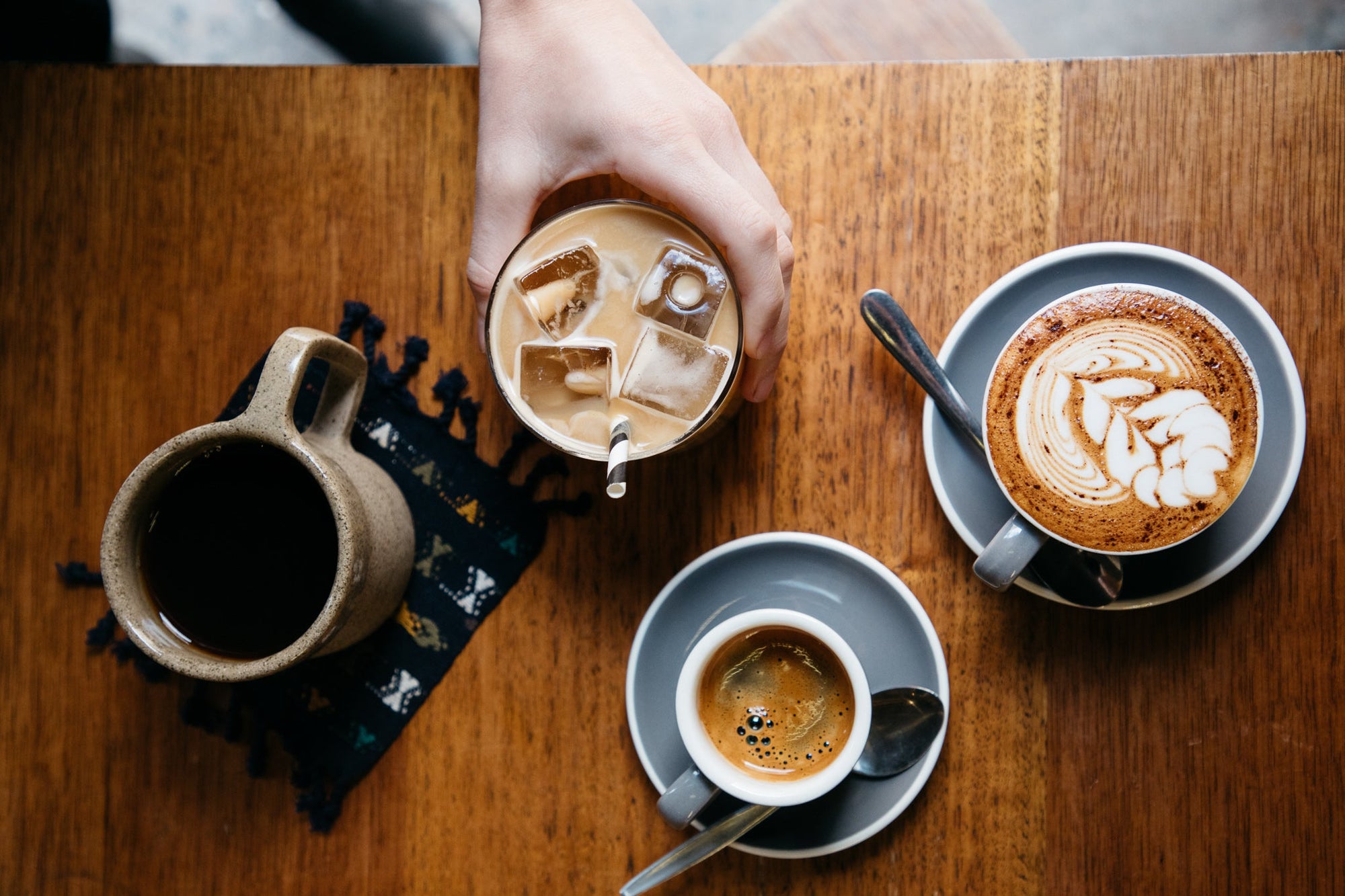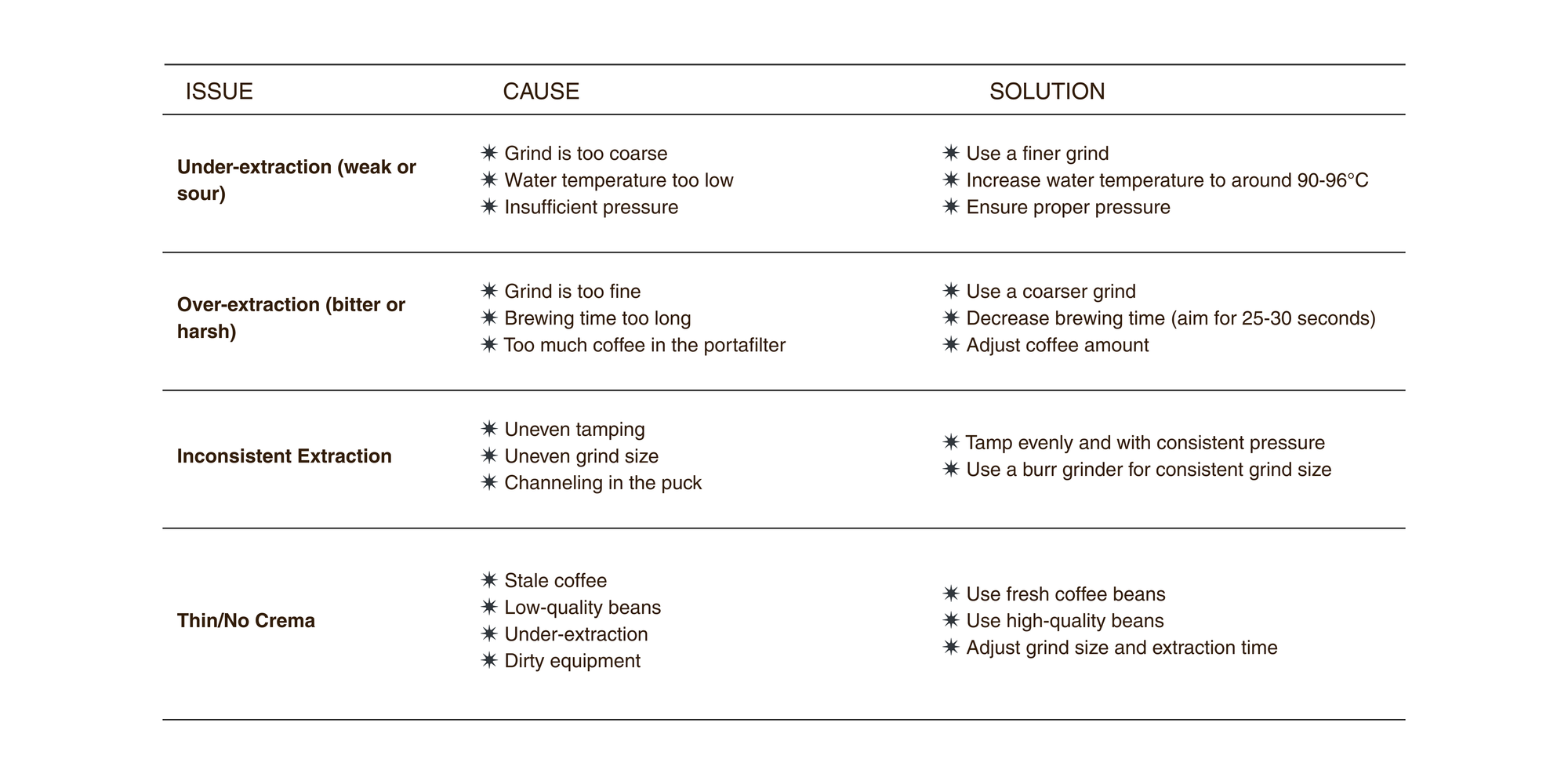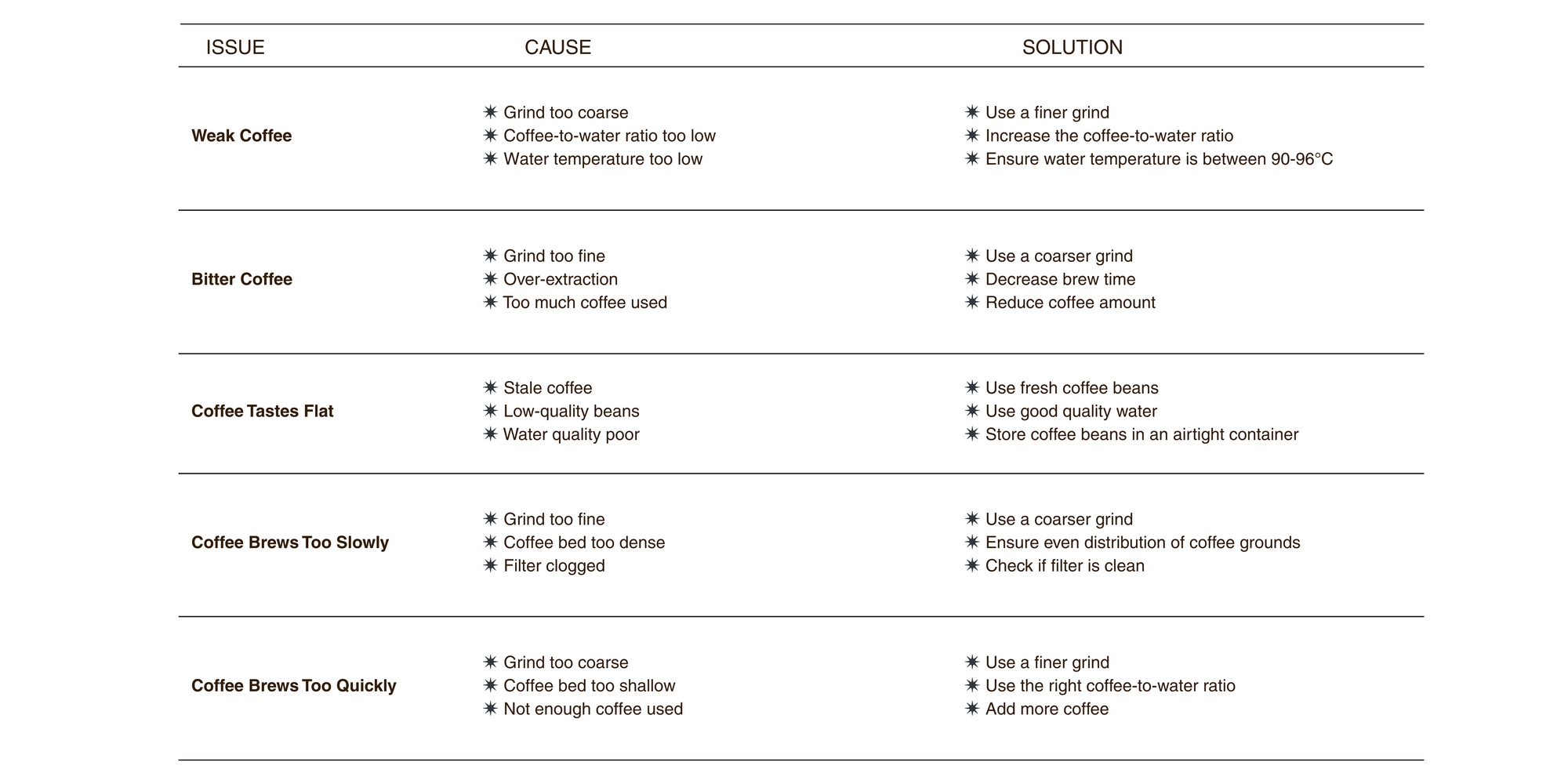DIALLING IN & TROUBLESHOOTING

REFINE YOUR BREW
Brewing coffee at home is rewarding, but it can take some trial and error to get it just right. Small details like grind size, water temperature, and brew time can affect flavour in big ways. Whether you’re making espresso or filter coffee, common issues like sourness, bitterness, or weak brews are easy to fix once you know what to look for.
DIALLING IN
ESPRESSO
ESPRESSO FAQ

dialling in
FILTER
Dialling in filter coffee is simply about finding the sweet spot, where your coffee tastes balanced, clear, and delicious. It can sound technical at first, but really, it just means adjusting your grind size and brew method to suit the coffee you're using.
Every coffee is different. Some beans are bright and fruity, others are chocolatey and rich, and small changes in how you brew can bring out the best in them. This can be dependent on terroir, varietal, roasting style and so on. If your cup tastes a little sour or too strong, don’t worry, it just means you’re a step closer to getting it right. A few simple tweaks can make a huge difference. Ensure you only chang one variable at a time!
The two main tools you’ll use to dial in are grind size and brew time. Grind a little finer if your coffee tastes sour or weak, or coarser if it tastes bitter or heavy. It’s not about perfection, it’s about understanding what changes do and slowly learning how to get your coffee tasting how you like it.
____
For example, you make a v60 with the ratio of 1:16 (15g in, 240g out) and find it tasting overwhelming and too strong. Your next steps could be coarsening your dose if the extraction time went too long (e.g. 4 minutes), or you could alter your ratio to 1:17, giving a lower TDS and less coffee to extract. So you would do 15g in, and 255g out, taste, and make changes accordingly.
Start simple. Taste as you go. And remember, every brew is a chance to get to know your coffee better.
FILTER FAQ










